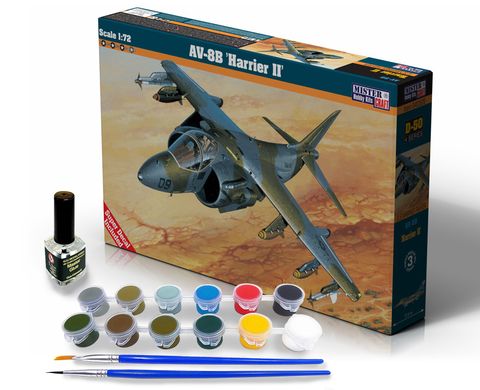The McDonnell-Douglas / BAe AV-8B Harrier II is a single-seat V / STOL attack aircraft with a duralumin half-body construction. The roots of the Harrier II aircraft date back to 1973, when McDonnell-Douglas and BAe jointly created a new, greatly improved Harrier. The recipients were to be the US Marine Corps, as well as the British Air Force and the Royal Navy. However, due to the high cost of a new engine for the Harrier (Pegasus 15) in 1975, the British government and thus BAe withdrew their cooperation. As a result, only the McDonnell-Douglas concern remained on the "battlefield". Considering the costs, the American label decided to do only a large-scale modification of the Harrier, using newer avionics, a different wing and large-scale composites. The first prototype, the YAV-8B, flew in 1978. In 1980, the British side decided to join the project again. The first ground-up AV-8B flew in 1981 and entered service in 1983. US Marine Corps units use the AV-8B, T AV-8B, AV-8B (NA), and AV-8B + versions. The first of them is the basic version of the aircraft, which performs the role of an attack fighter. It has a greater payload and range than the AV-8A, and is more maneuverable and has more advanced avionics and engines. The latter, on the contrary, is made to order from Italy and Spain and is used on the aircraft carriers of these countries. The RAF uses versions GR.5, GR.5A, GR.7, GR.7A, GR.9, GR.9A, as well as the T.10, T.11 and T.12. Aircraft marked GR are attack fighters, and T are two-seat trainers. The AV8B / Harrier II participated in Operation Desert Storm (1991) and the Iraq (2003) and Afghanistan (2006-2008) wars. Technical data (Harrier AV-8B version): length: 14.12 m, wingspan: 9.25 m, height: 3.56 m, maximum speed: 1085 km / h, combat radius: 1205 km, armament: stationary cannon GAU-12U caliber 25 mm, suspension - up to 3748 kg of cargo.















